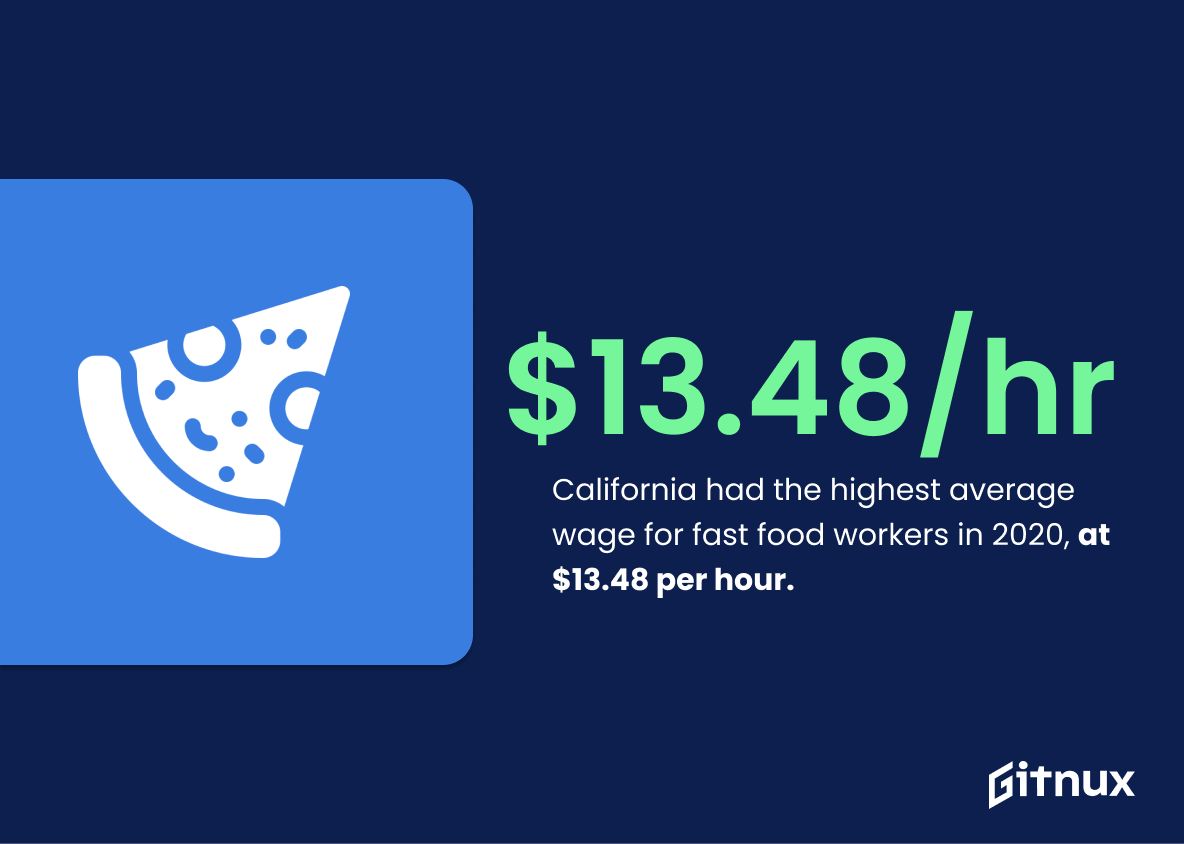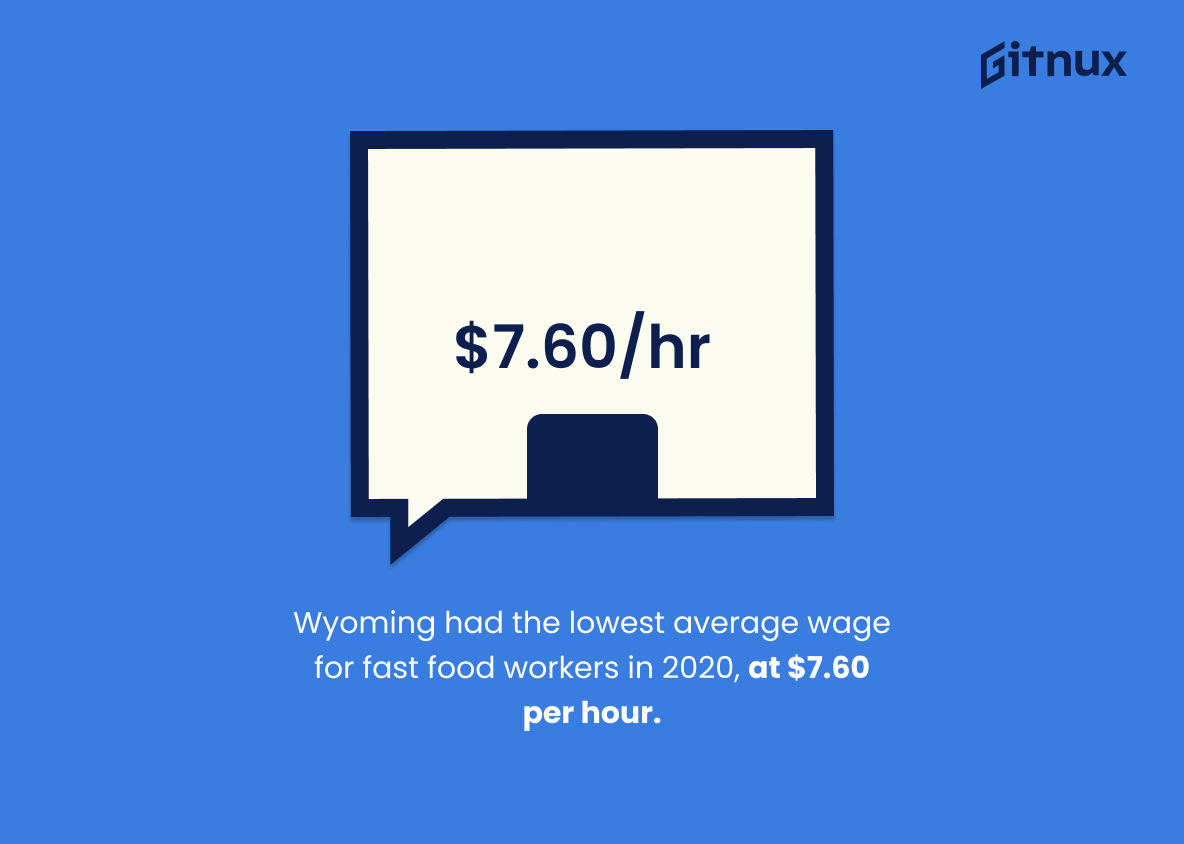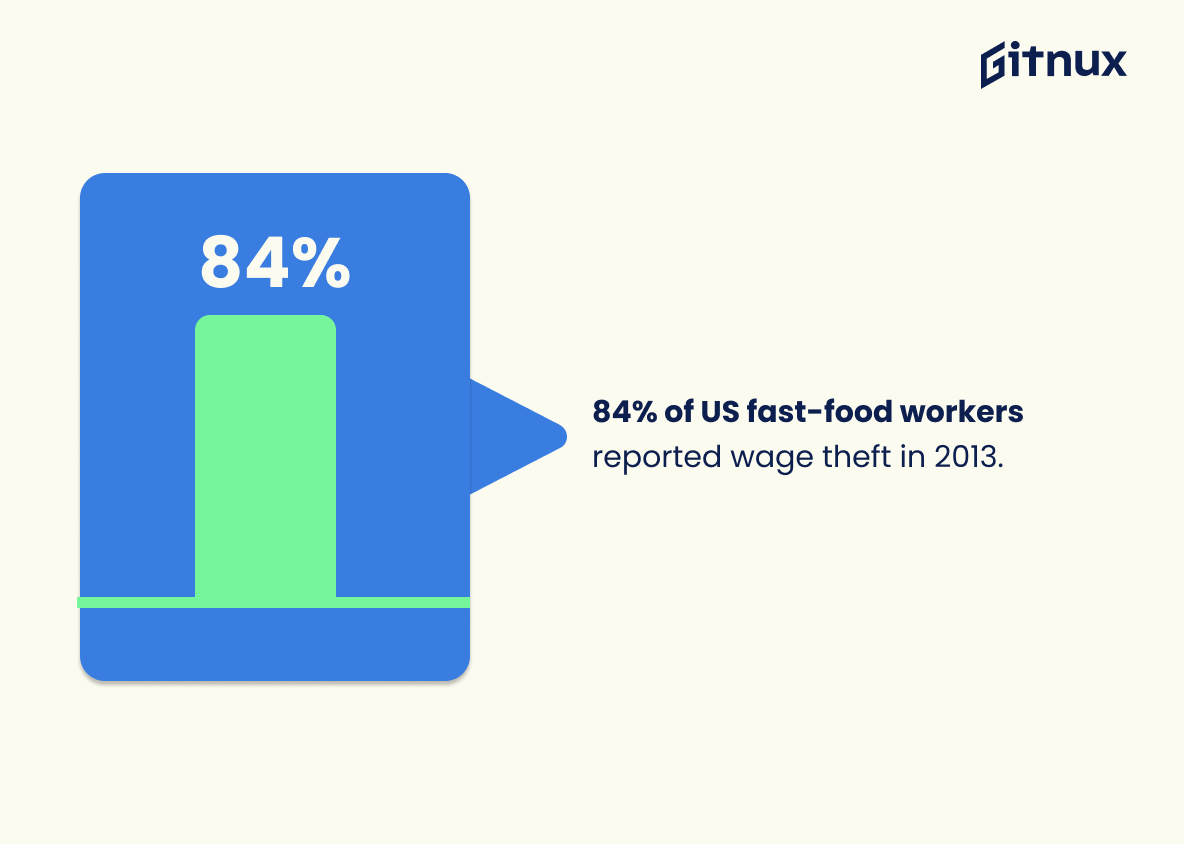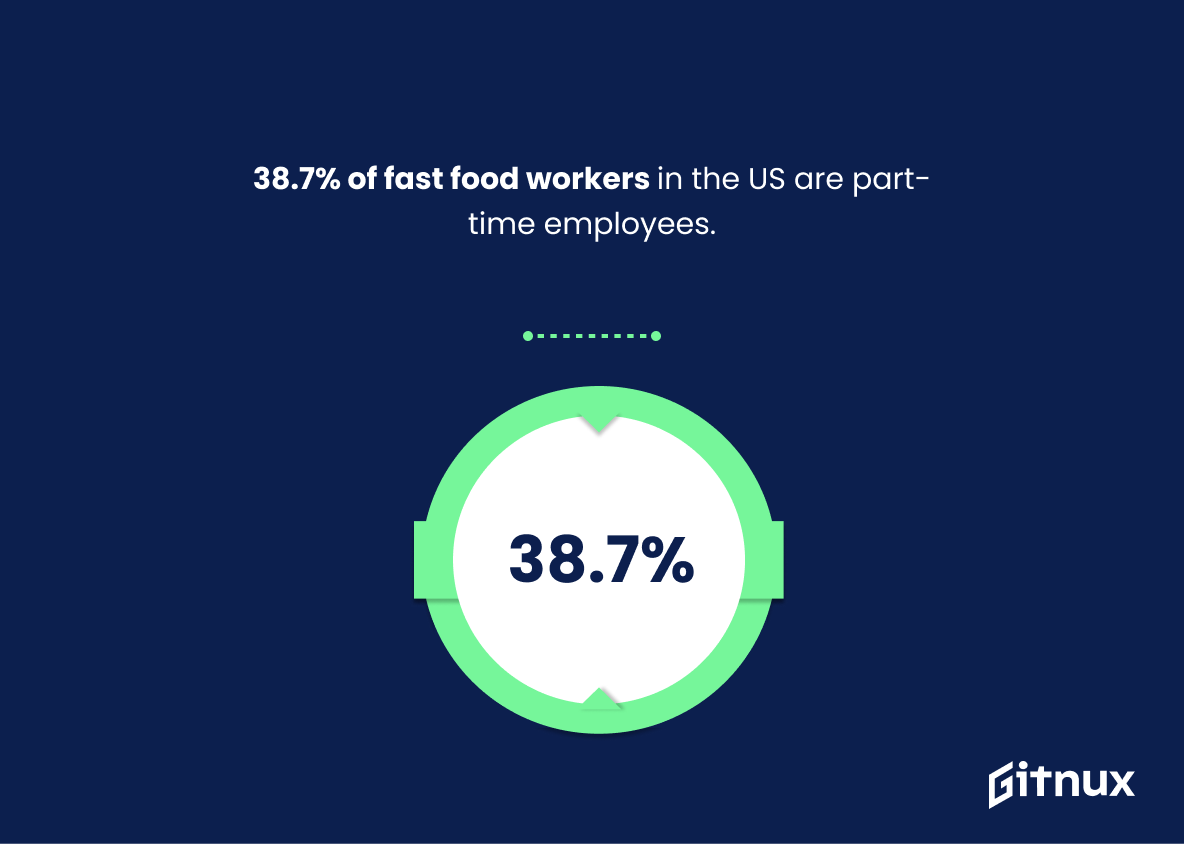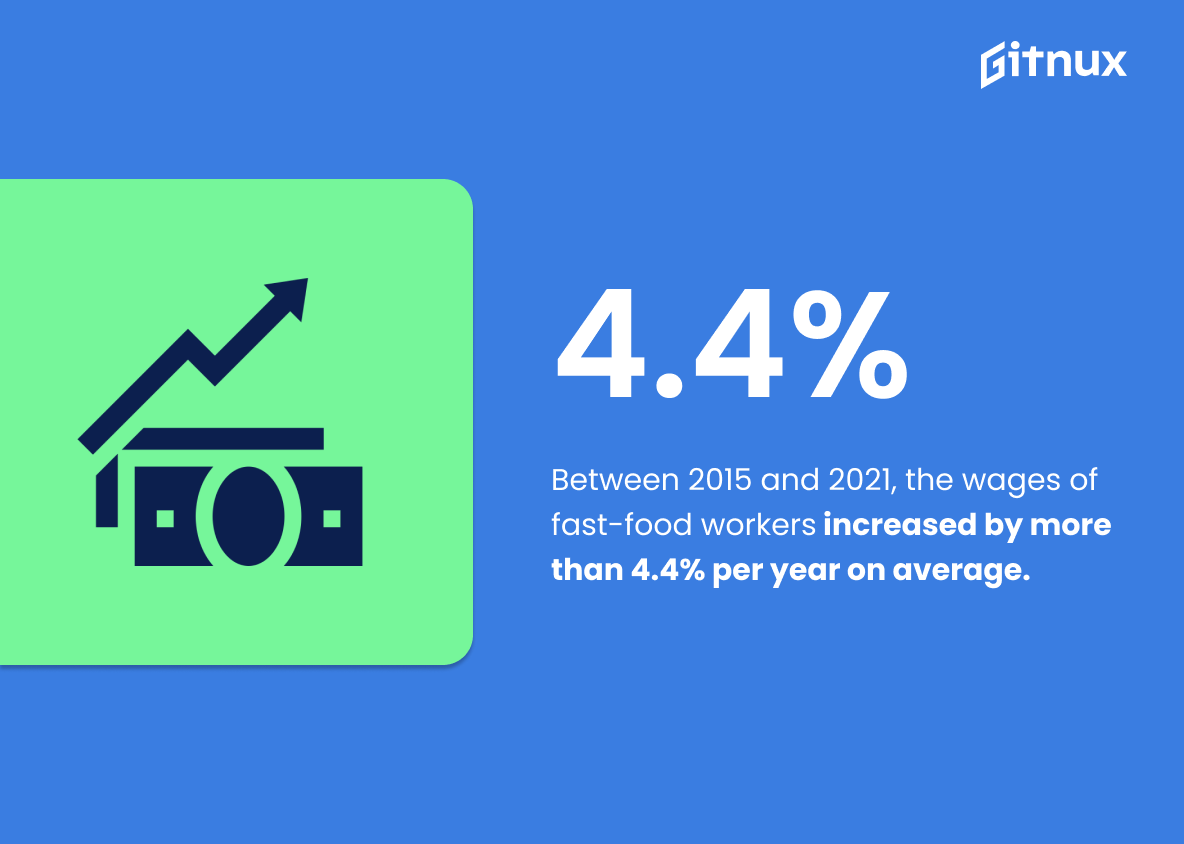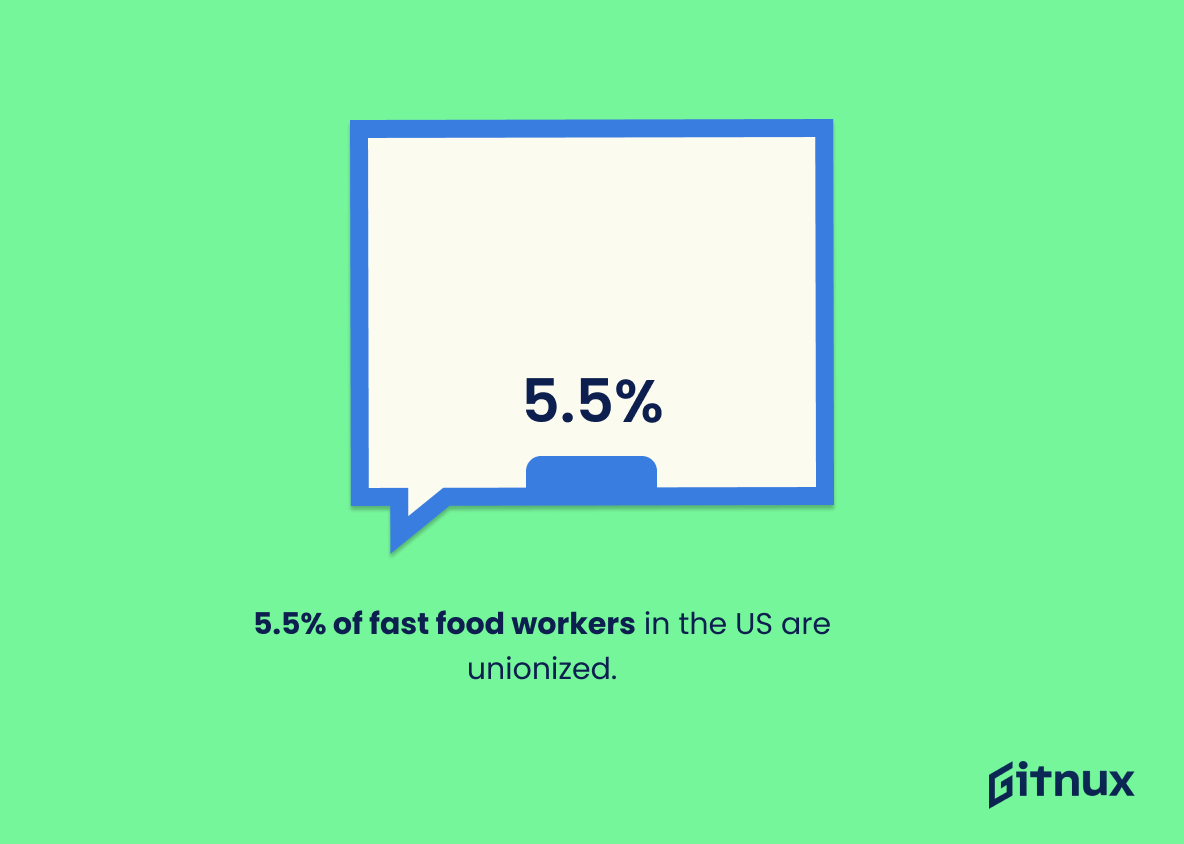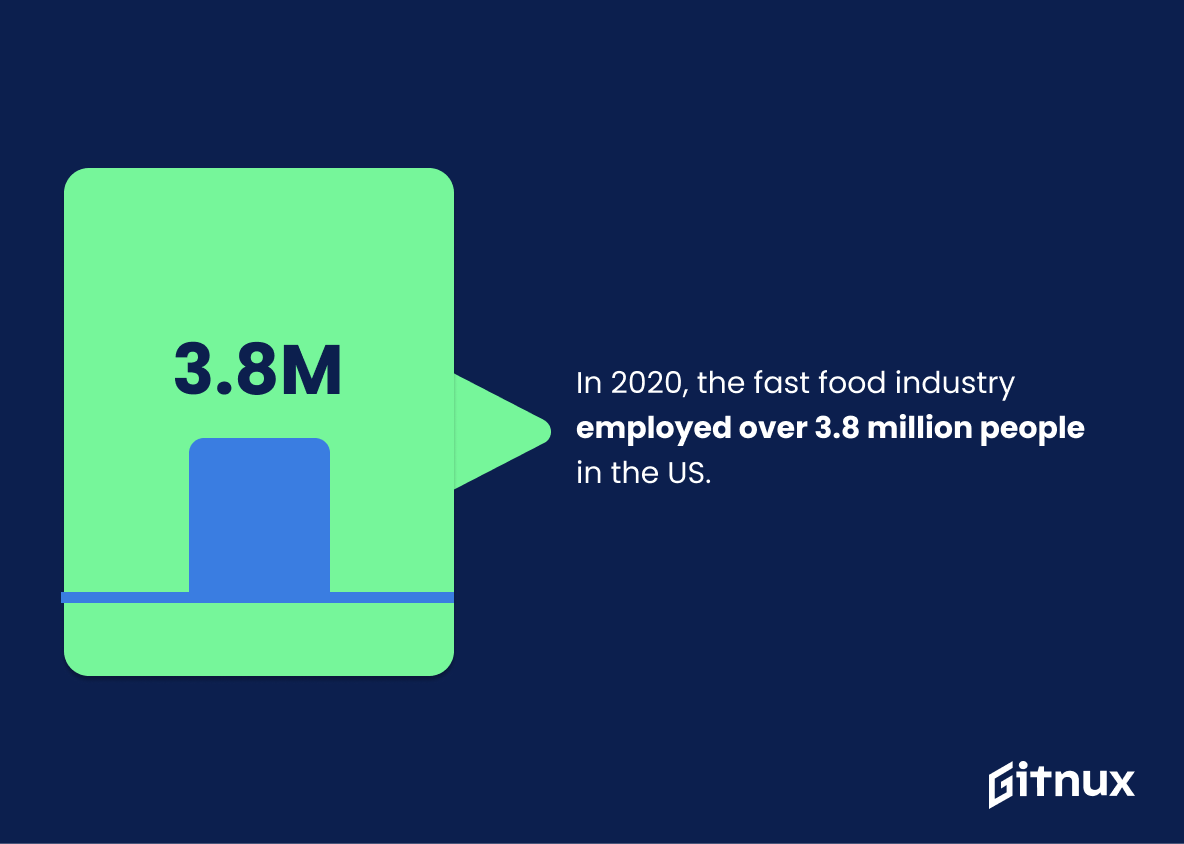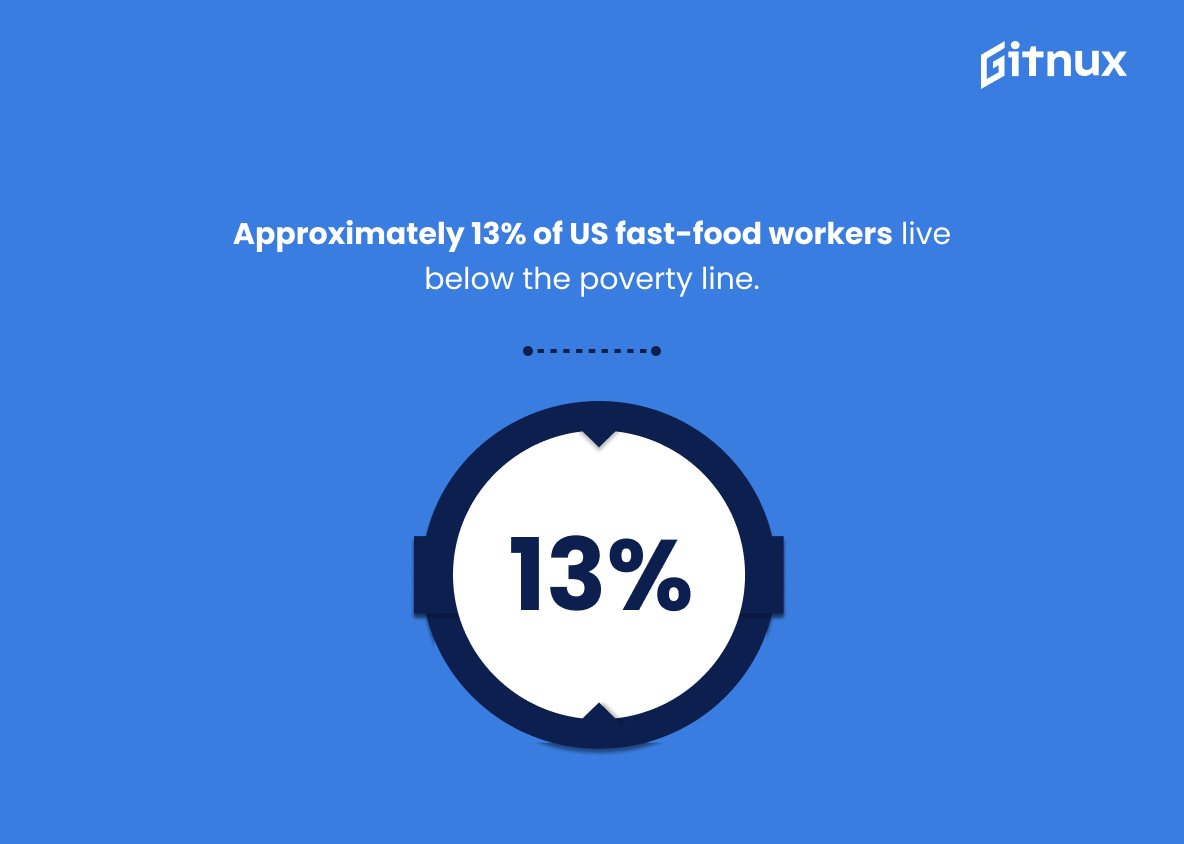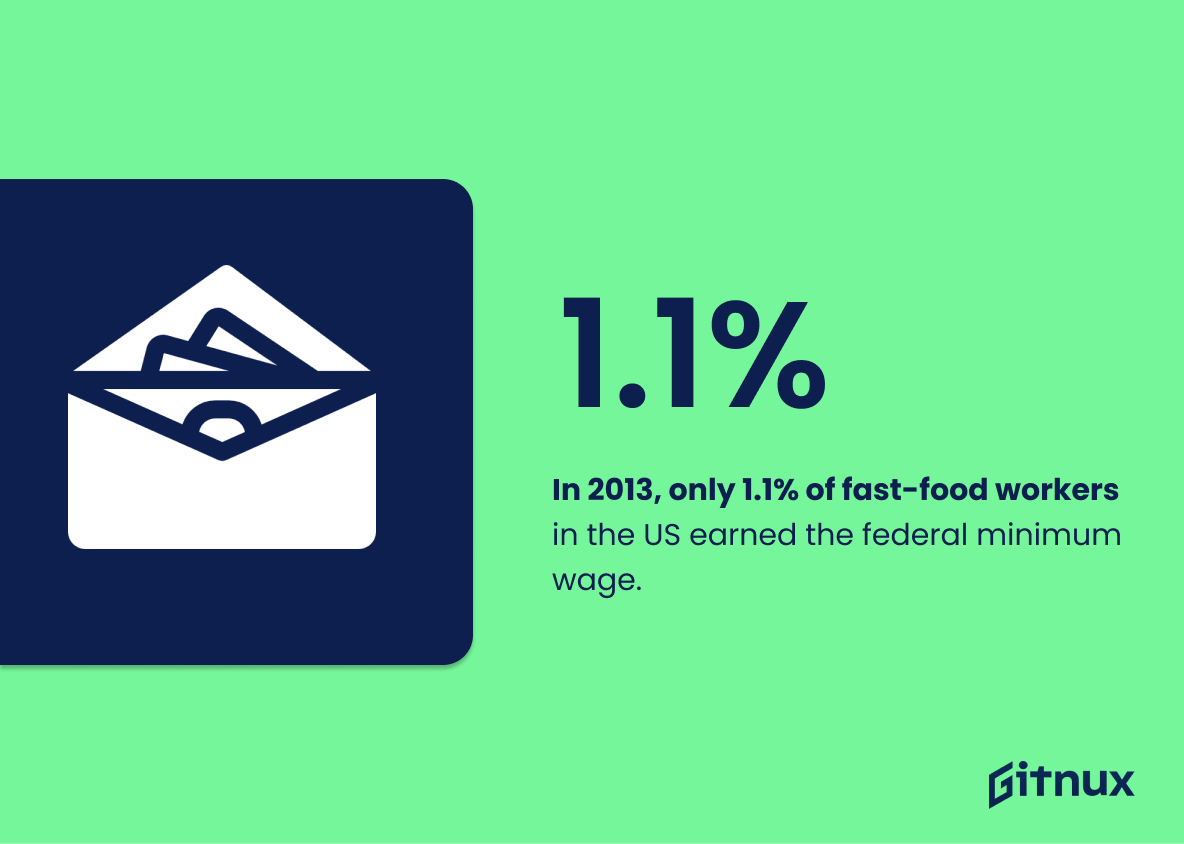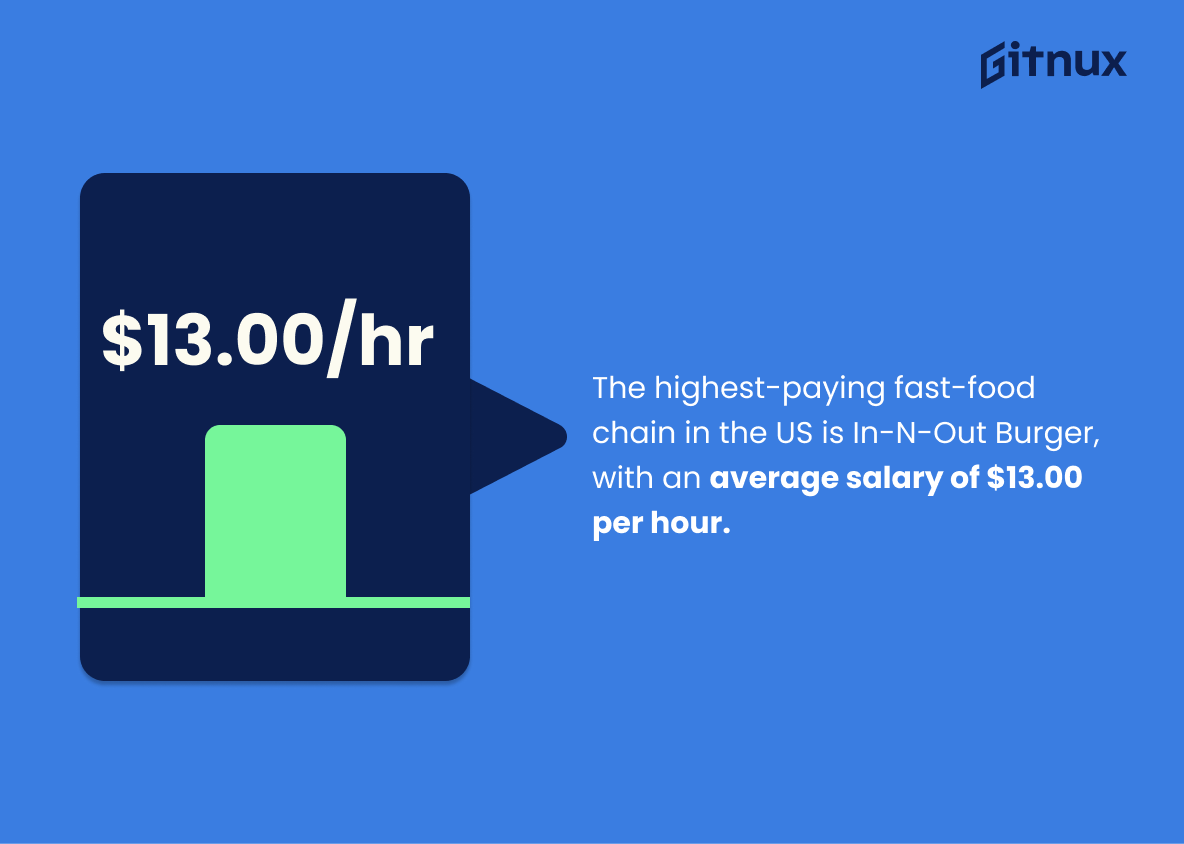The fast food industry is a major employer in the United States, with over 3.8 million people employed in 2020 alone. This blog post will explore wages and statistics related to this sector, including average hourly wage for workers, total wages paid out annually, age demographics of employees, state-by-state comparisons of pay rates and more. We’ll also look at issues such as wage theft and unionization among fast food workers as well as projections for future growth in the industry’s wages. Finally we’ll examine some interesting facts about salaries within specific chains like In-N-Out Burger that may surprise you. So let’s dive into these fascinating figures on US Fast Food Statistics.
This statistic is a powerful indicator of the importance of fast food workers in the US economy. It demonstrates the sheer amount of money that is being paid to these workers, and highlights the need for fair wages and better working conditions. This statistic is a key piece of evidence in the discussion of wages in US fast food statistics, and is essential in understanding the current state of the industry.
32.1% of fast food workers in the US are between 16 to 24 years old.
This statistic is a telling indication of the prevalence of young people in the US fast food industry. It highlights the fact that a large portion of the workforce is made up of young people, many of whom are likely to be in need of a living wage. This is an important factor to consider when discussing wages in the US fast food industry, as it suggests that a significant portion of the workforce is likely to be struggling to make ends meet.
Wages In Us Fast Food Statistics Overview
California had the highest average wage for fast food workers in 2020, at $13.48 per hour.
This statistic is a powerful indicator of the progress being made in the fight for fair wages in the fast food industry. It shows that, in 2020, California was leading the way in providing its fast food workers with a livable wage. This statistic is a testament to the hard work of activists and legislators in the state, and serves as an example for other states to follow.
Wyoming had the lowest average wage for fast food workers in 2020, at $7.60 per hour.
This statistic is a stark reminder of the inequality that exists in the US fast food industry. It highlights the fact that, despite the fact that fast food workers are often the backbone of the industry, they are not being paid a living wage. This statistic is a call to action for employers to ensure that their employees are being paid a fair wage for their hard work.
The fast food industry is 1.6 times more prone to wage theft than any other industry in the US.
This statistic is a stark reminder of the prevalence of wage theft in the fast food industry, highlighting the need for greater protection of workers’ rights and wages. It serves as a call to action for those concerned with the issue, emphasizing the importance of taking steps to ensure that workers in the fast food industry are not being taken advantage of.
84% of US fast-food workers reported wage theft in 2013.
This statistic is a stark reminder of the injustice faced by US fast-food workers in 2013. It highlights the prevalence of wage theft, which is a major issue in the fast-food industry. This statistic is a call to action for employers to ensure that their employees are being paid fairly and that their rights are being respected. It also serves as a reminder to workers to be aware of their rights and to take action if they feel they are being treated unfairly.
38.7% of fast food workers in the US are part-time employees.
This statistic is a telling indication of the state of wages in US fast food industry. It reveals that a large portion of the workforce is not receiving the full-time wages and benefits that come with a full-time job. This means that many of these workers are not able to make ends meet and are struggling to make a living. This statistic is a stark reminder of the need for better wages and benefits for fast food workers in the US.
Between 2015 and 2021, the wages of fast-food workers increased by more than 4.4% per year on average.
This statistic is a testament to the progress made in the wages of fast-food workers over the past few years. It shows that, despite the challenges of the pandemic, wages have been steadily increasing, providing a much-needed boost to the incomes of those in the industry. This is an important point to highlight in a blog post about wages in the US fast food industry, as it demonstrates that the industry is taking steps to ensure that its workers are being fairly compensated.
5.5% of fast food workers in the US are unionized.
This statistic is a telling indication of the state of wages in US fast food industry. It shows that despite the efforts of unions to improve the wages of fast food workers, only a small fraction of them are unionized. This highlights the need for further action to ensure that fast food workers are able to receive fair wages and better working conditions.
There was a 2.6% wage growth in the fast-food sector in the US between 2019 and 2020.
This statistic is a telling indication of the wage growth in the US fast-food sector, providing a valuable insight into the current state of wages in the industry. It is an important piece of information for anyone looking to understand the wage trends in the fast-food sector, and can be used to inform decisions about wages and employment in the sector.
In 2020, the fast food industry employed over 3.8 million people in the US.
This statistic is a powerful indicator of the importance of the fast food industry in the US economy. It demonstrates the sheer number of people employed in the sector, and the impact it has on the livelihoods of millions of Americans. It is a key piece of information when discussing wages in the fast food industry, as it provides a clear picture of the scale of the industry and the number of people it affects.
Approximately 13% of US fast-food workers live below the poverty line.
This statistic serves as a stark reminder of the harsh reality of wages in the US fast-food industry. It highlights the fact that despite the hard work of these employees, many are still struggling to make ends meet and are living in poverty. This statistic is a call to action for employers to ensure that their employees are being paid a living wage.
In 2013, only 1.1% of fast-food workers in the US earned the federal minimum wage.
This statistic is a telling indication of the state of wages in the US fast food industry. It shows that the vast majority of fast-food workers are not earning the federal minimum wage, which is a concerning sign for those who rely on these jobs for their livelihood. This statistic is a powerful reminder of the need for better wages in the fast food industry.
By 2026, wages for fast-food workers in the US are projected to increase by 6.2%.
This statistic is a crucial indicator of the future of wages in the US fast food industry. It shows that wages are expected to rise, which could be a sign of improved job security and better pay for those employed in the sector. This could be a positive development for those working in the industry, as well as for the economy as a whole. As such, this statistic is an important piece of information to consider when discussing wages in US fast food statistics.
50% of fast food workers are dependent on public assistance programs.
This statistic is a stark reminder of the reality of wages in the US fast food industry. It highlights the fact that despite the hard work of many fast food workers, their wages are not enough to support themselves and their families without the help of public assistance programs. This statistic is a call to action for employers to provide fair wages to their employees and for policy makers to ensure that workers are not left behind.
The highest-paying fast-food chain in the US is In-N-Out Burger, with an average salary of $13.00 per hour.
This statistic is a shining example of the potential for success in the fast-food industry. It shows that even in a competitive market, it is possible to pay employees a livable wage. This statistic is a testament to the fact that businesses can still be profitable while providing fair wages to their employees. It is a reminder that businesses should strive to provide fair wages to their employees, and that it is possible to do so without sacrificing profitability.
Fast food workers in the US witness a 76.9% rate of turnover.
This statistic is a stark reminder of the lack of job security and stability that fast food workers in the US experience. It highlights the need for better wages and working conditions in the fast food industry, as workers are constantly having to look for new jobs due to the high rate of turnover. This statistic is an important factor to consider when discussing wages in the US fast food industry.
Conclusion
The statistics presented in this blog post demonstrate the current state of wages for fast food workers in the US. The average hourly wage is $9.71, and total wages paid to these employees amounted to $29.5 billion in 2019. 32% of fast food workers are between 16-24 years old, while 38% are part-time employees and 5% unionized members. California has the highest average wage at $13.48 per hour, while Wyoming had the lowest at just over half that amount ($7.60).
In addition to low pay rates, many fast food workers experience wage theft or have difficulty making ends meet due to their income level; 84 percent reported experiencing some form of it in 2013 alone and 13 percent live below poverty line respectively . Fast Food Managers earn an average salary of 48K annually with In-N-Out Burger being one of the highest paying chains offering a rate close to double minimum wage ($13/hour). Finally, turnover rate among these positions stands at 76%.
Overall, despite recent increases (4%-6%) since 2015 , wages remain relatively stagnant when compared against inflation levels as well as other industries across America – leaving millions struggling financially on a daily basis without any real hope for improvement anytime soon unless drastic changes occur within this sector’s labor practices moving forward..
References
0. – https://www.csmonitor.com
1. – https://www.info.legalzoom.com
2. – https://www.businessinsider.com
3. – https://www.nrn.com
4. – https://www.ibisworld.com
5. – https://www.cpp.edu
6. – https://www.laborcenter.berkeley.edu
7. – https://www.bls.gov
8. – https://www.statista.com
